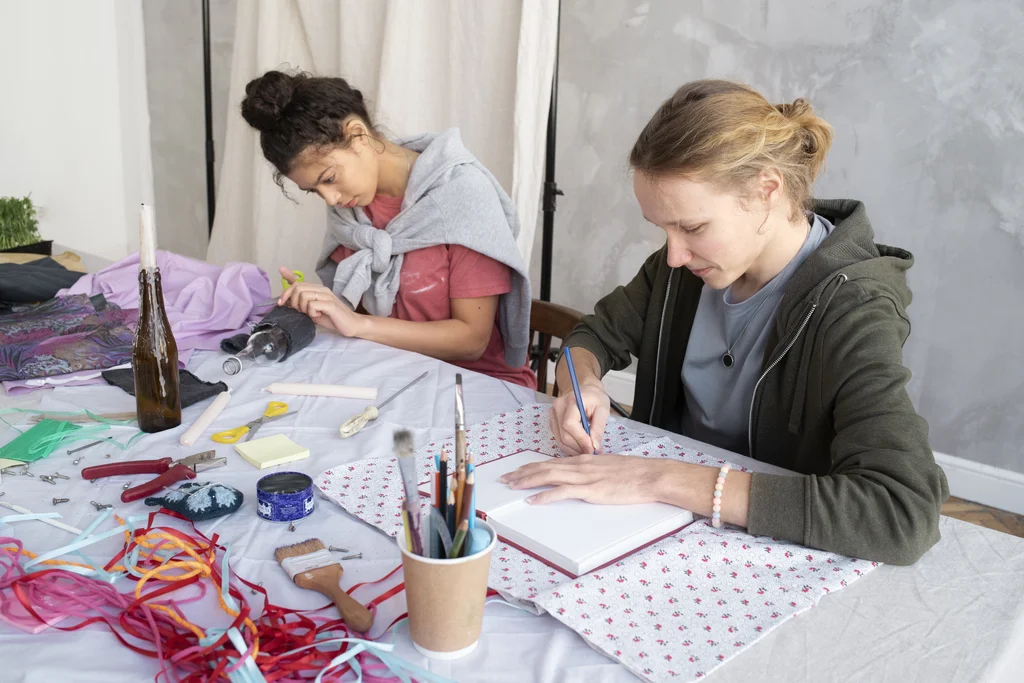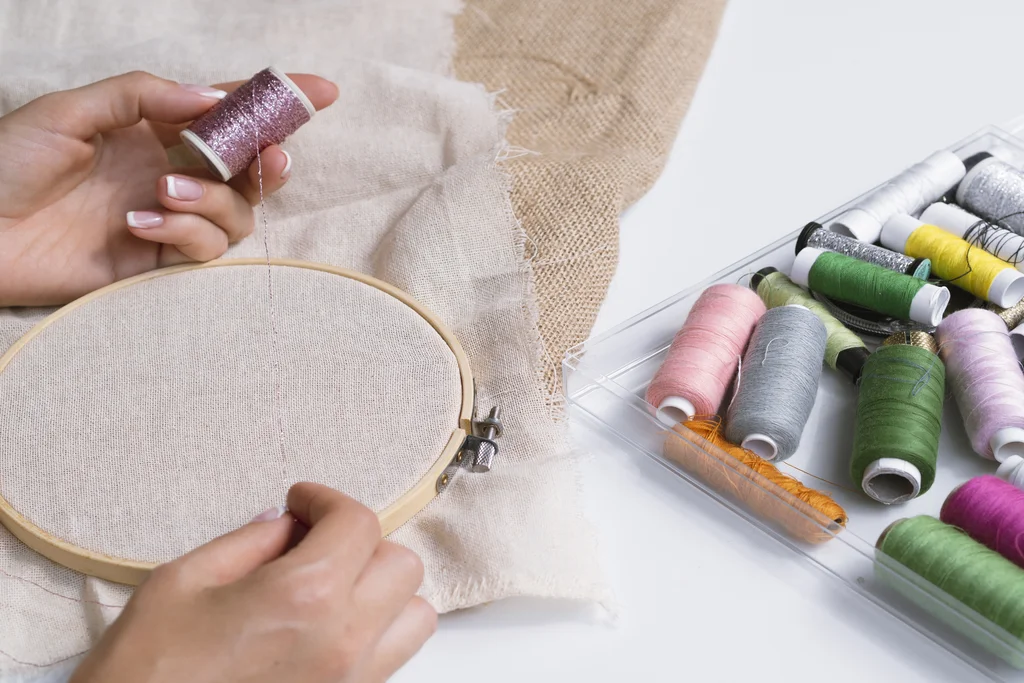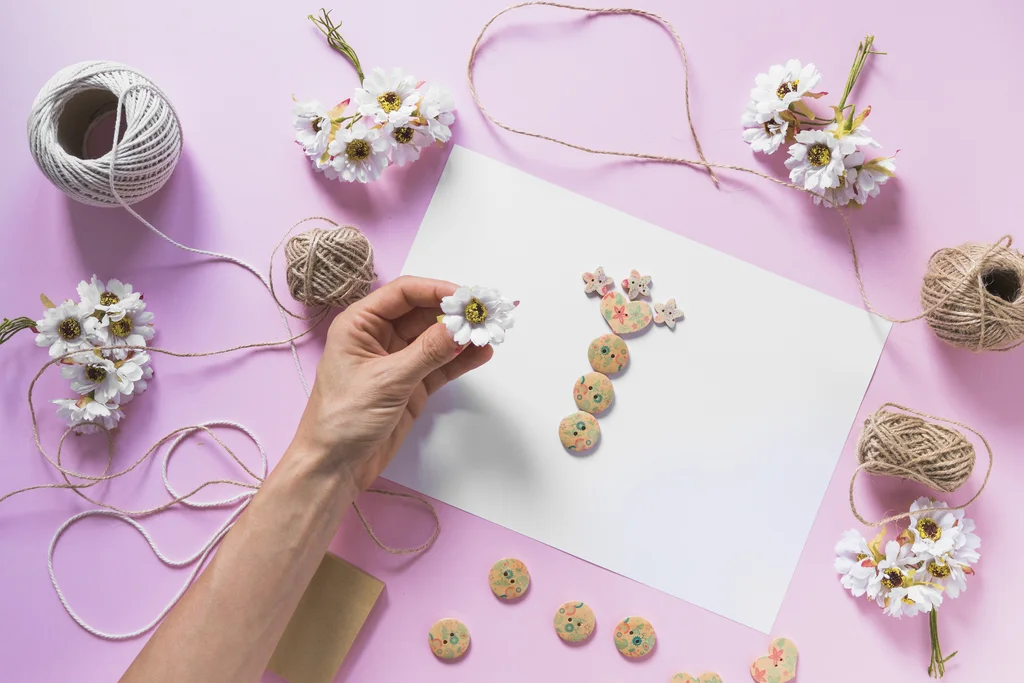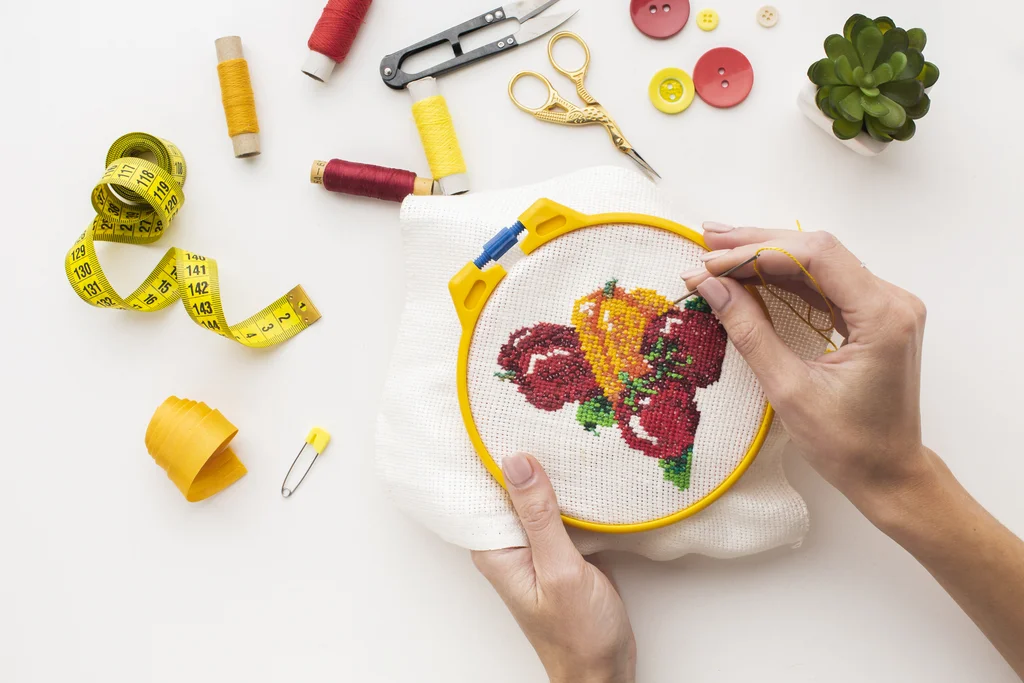What Is Thread Painting?
Thread Painting is an embroidery technique that produces realistic effects through the use of shading color blending and long and short stitches. The embroiderer uses the thread as paint and the needle as a brush rather than flat, consistent stitches. Thread painting, also referred to as “needle painting” or “silk shading” is a stitching technique that lets you make designs that look more like paintings than embroidery.Your chosen design will appear more realistic and three dimensional thanks to the technique’s ability to add delicate light and shade and smoothly flow between colors.
Types Of Thread Painting:
Long And Short Stitch: Long and Short Stitch is the most common stitch used in because it creates a seamless transition between two colors in a specific location.
Satin Stitch: This creates a smooth, glossy surface with tightly spaced stitches. For strong regions like flowers, fruits, or geometric designs that require a polished finish, satin stitch works nicely.
Layered Shading Thread Painting: The goal of this method is to create depth by layering threads in various tones and directions For realistic embroidered designs like landscapes and portraits it works very well.
Mixed Media Thread Painting: Some artists use beads, sequins, or even fabric paint in addition to thread painting. This hybrid technique highlights the embroidery as a textured piece of art and provides additional dimension.
Split Stitch Thread Painting: This style produces a delicate and textured impression by using the needle to break the stitches in the center. It’s frequently employed for intricate tasks like textured backdrops, animal fur, and hair.
Understanding The Craft Of Thread Painting:
Embroidery that mimics a painting is called thread painting. The way you manage the needle and threads makes a difference. In stitching threads are meticulously stacked, colored, and oriented to mimic brushstrokes in contrast to traditional stitching which frequently uses repeating stitches. To replicate the flow of natural elements, the technique uses a combination of long and short stitches, combining different shades of thread, and manipulating the direction of the stitches.
Tools And Materials:
The fact that doesn’t require a large toolbox is one of its best features You can begin experimenting with the technique with just a few prerequisites. However your results will be significantly impacted by the materials you choose. Strong tightly woven materials like cotton or linen are the starting point for longer lasting crafts. These make the ideal foundation for intricate stitching. Because it comes in a variety of tints that may be mixed like paint, premium cotton embroidery floss is the best option.

How To Turn Your Ideas Into Realistic Thread Painting:
Here is a step by step approach to transforming your creative ideas into a finished embroidery design:
- Create a sketch first either digitally or on paper.
- Transfer the Design: Outline the design on fabric using transfer markers or tracing paper.
- The colors you choose should be bright, medium, and dark.
- Layer Stitches The use of long and short stitches creates a smooth color blend.
- To add depth build layers gradually while paying attention to the shadows and highlights.
- When finished, lightly wash and either frame or use as décor.
Why Modern Crafters Find Thread Painting Popular:
The popularity of thread painting Personalization is a larger pattern with modern handicraft that is reflected in embroidery. People are drawn to handmade work with a personal narrative in a world when mass production rules. This need is met by which enables artists to transform their own drawings, concepts, and inspirations into fabric. Its calm nature is another factor contributing to its popularity. It is incredibly healing to sit with a hoop, work gently through color layers, and watch a design take shape.

How To Add Texture And Depth In Thread Painting?
Texture in thread painting also known as needle painting provides a tactile surface for your needlework, giving realistic-feeling components like fur, feathers flowers or folds of fabric. By giving the appearance of three dimensions, depth makes your work stand out rather than appear flat. When combined they transform your needlework from a piece of stitched fabric into an artwork.
Blending Colors In Thread Paiting:
Color blending is an important method in thread painting that adds realistic look, depth softness to the embroidery. Instead of employing strong color blocks blending allows tones to flow naturally into one another much like brushstrokes in a painting. Using a range of tones within the same color family light medium and dark is crucial to creating smooth and realistic transitions. Stitching that captures movement light and shadow makes designs appear three dimensional. Once perfected successful blending transforms thread painting into authentic fabric art but it takes time practice and natural observation.

Why Choose Thread Painting?
Using fabric as your canvas and threads as your paint, thread painting is more than simply a craft; it’s a means of expressing your creativity. This is the reason it’s growing in popularity:
- Produces realistic embroidered patterns that resemble works of art.
- Provides countless options for customized patterns.
- Promotes stress reduction and mindfulness.
- combines creativity from the present with tradition.
- can be used for gifts, home décor, and clothing.

Thread Painting Flowers:
One of the most satisfying embroidery techniques is thread painting flowers, where you use a needle and thread to capture the delicate beauty of nature. Thread painting emphasizes blending, shading, and stitch direction to create a realistic, painterly look, unlike traditional needlework that often relies on outlines and repeated stitch patterns. Flowers suit this method perfectly because of their natural variations in color and form. Each petal, leaf, and stem lets you explore depth, texture, and movement, turning basic stitches into realistic blossoms that appear to grow out of the fabric.

Table About Thread Painting:
| Aspect | Description |
|---|---|
| Definition | a method of stitching that produces realistic designs by mixing and shading. |
| Common Stitches | Portraits, butterflies, birds, animals, flowers, and foliage. |
| Best Subjects | Flowers, leaves, birds, animals, butterflies, portraits. |
| Materials | Stitching needles a hoop or frame embroidery floss and tightly woven cloth. |
| Key Techniques | shading for depth, changing the direction of stitches, layering threads, and blending colors. |
| Skill Level | Simple patterns to complex artwork suitable for beginner to experts. |
| Effect | gives fabric a lifelike painted appearance. |
FAQ’s
Which Stitches Are Used In Thread Painting?
The long and short stitch works as the most common stitch for color blending. You can also use satin stitch, split stitch, French knots, bullion knots, and seed stitches to add texture and enhance your designs.
How Do I blend Colors In Thread Painting?
Light medium and dark stitches can be crossed to blend colors For a seamless transition use irregular stitch lengths blend multiple strands in a single needle and layer colors gradually.
How Do I Create Depth In My Designs?
Use shading techniques to connect colors by blending midtones, placing lighter shades where light falls, and adding deeper hues in shadowed areas. For a 3D effect, stitch background elements first, then layer the foreground items on top.
What Materials Do I Need For Thread Painting?
A hoop or frame to keep your cloth straight embroidery thread in various shades, needles, and tightly woven fabric such as cotton, linen or silk are required.
Quick Review:
Thread painting also known as needle painting or silk shading is an embroidery technique that uses long and short stitches color blending and shading to create realistic painterly designs on fabric By layering light medium and dark tones adjusting stitch direction and adding texture with specialty stitches artists can bring flowers animals and portraits to life with depth and dimension It is a versatile art form that combines patience creativity and precision making embroidery look like a painted masterpiece.
Read More Related Articles https://trendythreads.net/modern-needlepoint-designs-that-are-trending-in-2025/




